Kanban
kanban. what is it?
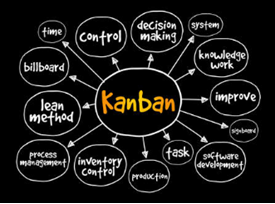
Kanban is a word of Japanese origin, and it means "visual cards".
Kanban is a tool to achieve JIT production. It is a card that is usually placed in a rectangular vinyl envelope. Mainly two types of Kanban are used: a withdrawal Kanban and a production order Kanban.
A withdrawal Kanban specifies the kind and quantity of product which the subsequent process should withdraw from the preceding process, while a production-ordering
Kanban specifies the kind and quantity of product which the preceding process must produce.
The production-ordering Kanban is often called an in-process Kanban or simply a production Kanban. Several kinds of Kanban exist. For making withdrawals from a vendor (a part or materials supplier, also called a subcontractor), a supplier Kanban (also called a subcontractor Kanban) is used. The supplier Kanban contains instructions which request the subcontracted supplier to deliver the parts.
Production-ordering Kanban
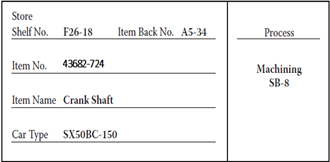
Withdrawal Kanban
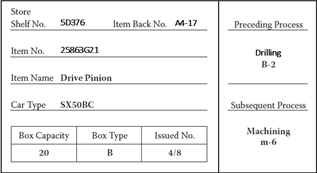
From the application of agile methodologies applying this method can permanently and visually show the status of the project to all those involved. Kanban is a very useful method to manage products whose requirements change constantly, given that new needs appear or because their priority varies.
This method is also useful in cases where it is very complicated planning work, as well as when a team cannot be committed to working with iterations of fixed and predetermined duration for whatever reason (interruptions, changes, dependencies, etc.).
It is used a lot for the resolution of incidents and activities of maintenance: that is, when the amount of work and its nature.
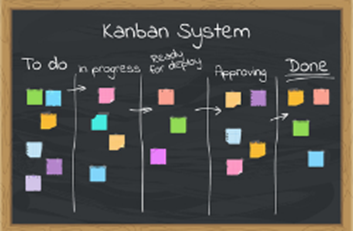
In a simplified way, the steps you must follow to work with Kanban are the following:
1. Visualize the flow of all the work: In a panel organized in columns must be represented the entire flow of work to be carried out in the project, from the beginning to the last moment.
2. Divide the work into small items and write each one on a card. Prioritize them and place them in order in the first column of the board. A good practice is to try of dividing the items so that the workload is like each other.
3. Limit the work in progress: This is one of the keys to working with Kanban work. It is essential to put a limit on the number of items allowed in each column and thus avoid collapses, bottlenecks and eliminate as soon as possible the impediments that arise and prevent working at a sustainable pace.
4. Measure the time taken to complete a complete cycle. Calculate the time that used from when you start working on an item or task until it is closed or finished and try to find a way to decrease this time.
With Kanban, those involved in the creation of a product have access to all the information about it and the state of each of its parts at all times. The degree of Engagement increases remarkably, as everyone can participate in direct improvement and immediate process. Working in such a visual way, it is easier, just as it has been explained, identify problems, detect bottlenecks, and remove impediments as they are produced, reducing costs and increasing productivity and quality. The use of Kanban can be a good choice if you intend to make a transition in a company to agile methodologies gradually.
kanban vs. agile vs. scrum

Kanban, unlike Agile and likewise with SCRUM, has proven its usefulness in contexts where most of the workload is operational. The classic example is industrial manufacturing, such as the Toyota factories where the method was devised. But also, the design of new products and services in any industry can benefit from its structure.
3 principles of kanban
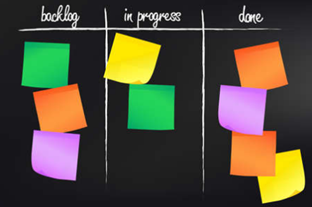
- Visualize everything that is happening at a given moment. Each item and its progress status are viewed in the context of all work, whether it is a project or ongoing operations.
- Limit the capacity of work in progress, or Work In Progress (WIP). You have to put a maximum to the number of tasks that can be managed at the same time and the visual limits of the board help to physically perceive this limitation of maximums. For example, if a quality control unit can handle a maximum of 5 batches of bearings, it will not be able to accept the sixth batch until it is finished with one of the previous five. It may not be very intuitive, but the limitation of WIP consists precisely in making bottlenecks visible to prioritize work in those areas and to be able to concentrate resources on solving them.
- Improve work continuity. As soon as an item is finished, another backlog task starts. For this, it is essential that the backlog is properly managed, prioritized and categorized.
Take a look to our affiliate international certification programs.
We have helped thousands of trainees to become more productive within their professional activities, entrepreneurial initiatives and even to their personal interests.
Become a certified professional as well!